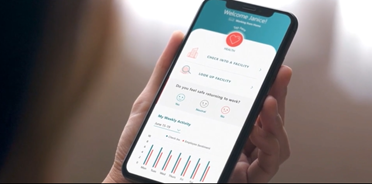What comes to mind when you think of applications development (app dev) within your business? Does your team have the know-how or extensive training in app development? Concepts like low code app dev is enabling a wide range of users from business analysts to teachers and even farmers, making digital transformation inclusive more than ever in the history of IT.
This trend solves a problem of ever-increasing demand for new applications, a shortage of developers in the market, and significantly cuts down the costs and time of development. Gartner predicts that low code application building would gather more than 65% of all app development functions by the year 2024 and with about 66% of big companies using a minimum of four low code platforms.
Gartner predicts that low code application building would gather more than 65% of all app development functions by the year 2024
What is Microsoft PowerApps?
One of today’s leaders of low code app dev tools is Microsoft PowerApps. Microsoft PowerApps is within Microsoft’s Power Platform alongside Power BI and Power Automate, a suite of platforms that automates processes, connects data, and supports an agile-driven analytics strategy. Within this low code app development platform is a suite of services, connector and data platforms that provides a rapid application development environment to build custom apps for your business needs. Its intuitive drag and drop format minimize potential gaps between the business needs and technical coding.
Microsoft PowerApps can connect to your business data stored in either Common Data Service (Microsoft data platform) or various online and on-premises data sources (SharePoint, Microsoft 365, SQL Server, etc). Although all the applications built with Microsoft PowerApps are meant for internal business use, there is a way to share canvas apps with guest users of Azure Active Directory tenant, which enables inviting external business partners or contractors to run your company’s canvas apps as well.
The future of coding is no coding at all. – Chris Wanstrath, Former CEO at GitHub
App Development in Action
By November 2019, 86% of the Fortune 500 were using Microsoft PowerApps along with thousands of organizations of various sizes and geography. Microsoft PowerApps is a business intelligence solution that can improve business operations. For instance, since Microsoft PowerApps can interact with other Office 365 workloads and data, it’s great for building onboarding tasks app that helps support human resource departments and new employees to share contact information, link policies, and gather new hire forms.
Another example is a mobile inspection app for retailers, construction companies, and healthcare providers that would allow users to capture product photos during inspections. The image and GPS data would then be stored on SharePoint or the data service layer acting as a database.
Microsoft PowerApps can also be used to build interactive helpdesk tools that let users submit IT tickets and organizations collect service requests for facility maintenance, human resources, and procurement.
Another recent case study is how T-Mobile, a telecommunications company, built an app, called Orbit, which is used by team members, project managers, and executives to approve all new initiatives across the company, such as device promotions, service offers, and more. Prior to this solution, the initiatives process was not centralized. There was no cohesive way that intakes were inputted or reviewed, and mainly Excel was used to run the process. It was time and labor-intensive, and cumbersome to review.

Photo from Microsoft PowerApps Return to the Workplace Solution via docs.microsoft.com/en-us/powerapps. September 11, 2020
Recently, as a response to pandemic and business closures, Microsoft itself built a PowerApps solution called Return to Workplace, which enables facility managers and executives to monitor and safely reopen their locations and empower employees to return confidently with self-service tools for working safely and productively. This app is free and available for download as long as the organization has the necessary Microsoft PowerApps licensing in place.
Overall, we can see that Microsoft PowerApps can transform business operations, improve employee experience, drive innovation across all the business units and empower users by giving them an opportunity to solve real business problems and add value to their organization. Explore ways to implement Microsoft PowerApps within your BI Strategy with a custom assessment by 3Cloud.




